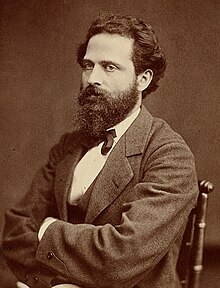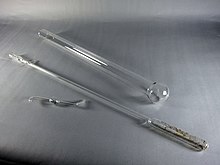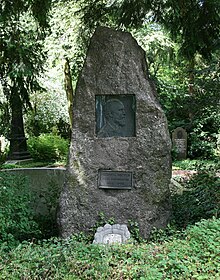Viktor Meyer | |
|---|---|
 Viktor Meyer | |
| Born | 8 September 1848 Berlin, Germany |
| Died | 8 August 1897(1897-08-08) (aged 48) Heidelberg, Germany |
| Alma mater | University of Heidelberg |
| Spouse | Hedwig Davidson |
| Awards | Davy Medal (1891) |
| Scientific career | |
| Institutions | Polytechnikum of Stuttgart, Polytechnikum of Zurich, University of Heidelberg, University of Göttingen |
| Doctoral advisor | Robert Bunsen, Emil Erlenmeyer |
| Doctoral students | Traugott Sandmeyer, Wilhelm Michler, Max Bodenstein, Heinrich Biltz, Jocelyn Field Thorpe |
Viktor Meyer (8 September 1848 – 8 August 1897) was a German chemist and significant contributor to both organic and inorganic chemistry. He is best known for inventing an apparatus for determining vapour densities, the Viktor Meyer apparatus, and for discovering thiophene, a heterocyclic compound. He is sometimes referred to as Victor Meyer, a name used in some of his publications.

